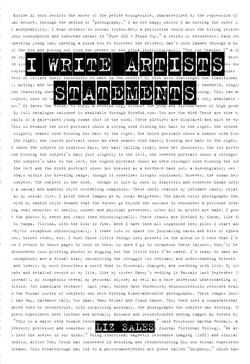Читать книгу I Write Artist Statements - Liz Sales - Страница 17
На сайте Литреса книга снята с продажи.
ОглавлениеOliver Curry
Oliver Curry is one of the most respected photographers working today. He forged his reputation as a photojournalist through decades of powerful black-and-white images of social and ecological disaster. Whether he’s documenting refugees or vast barren landscapes, he knows exactly how to grab the essence of a moment so that when one sees his images, one is involuntarily drawn into them. These highly resolved and beautifully rendered photographs depict the effects of war, drought, and famine in developing nations from a comfortably safe distance. They successfully purport to teach us the disastrous effects of war, poverty, and disease, without implicating us or suggesting a call to action. From the Lost Boys of Sudan to displaced Syrian refugees in government-run camps in Turkey, Curry has turned suffering people into beautiful objects of easy consumption. In doing so, he has challenged our perception of documentary-led photographic conventions as useful or relevant.
As the availability of editorial photography jobs for magazines and newspapers has waned, Curry has turned to the gallery as a showplace for such documentation of post-tragedy life. Contemporary art photography now presents a market for the consequences of political and human upheaval. This is because under Curry’s skillful gaze, the camera has the power to turn human suffering into collectible objects that art enthusiasts would like to buy and own. Relocating his work to a smaller audience was not only a financial decision for Curry but also an ethical one, because “concerned photography” has done at least as much to deaden our conscience as to arouse it. The more photographs of suffering we see, the less shocked we are. Curry’s counter-photojournalistic aftermath photography now reaches a discreet audience, where it can do the least amount of damage for the highest monetary return.
